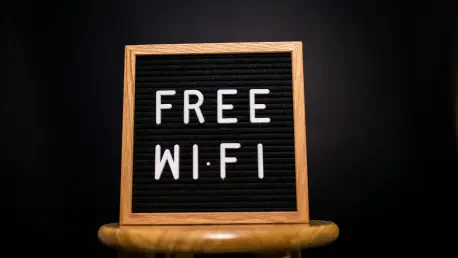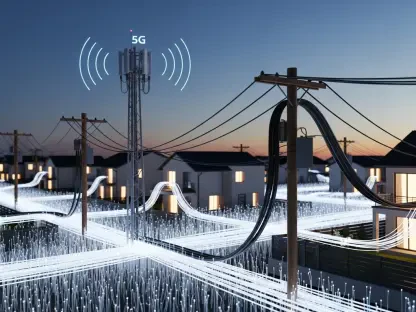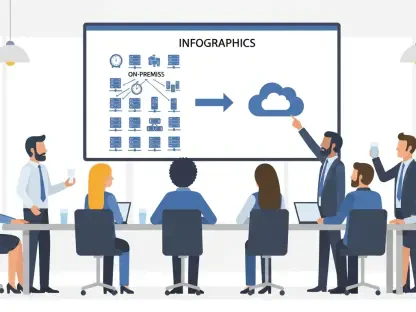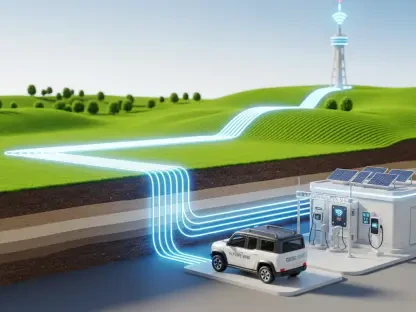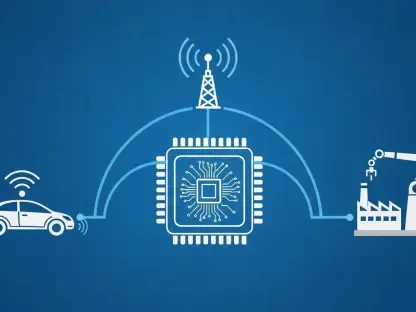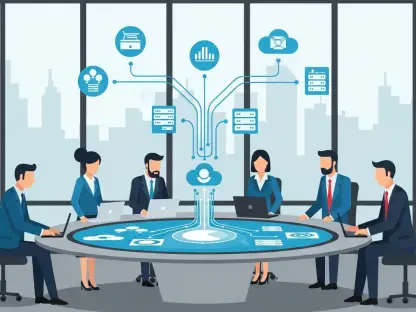In an era where digital connectivity is crucial for everything from job applications to accessing healthcare, millions of Americans still struggle to afford basic mobile services, and this gap in access can hinder opportunities and isolate individuals from essential resources. Fortunately, solutions are emerging to bridge this divide, and one standout provider is making waves by offering free phones and wireless plans through government-backed initiatives. This provider ensures that low-income households can stay connected without the burden of monthly bills or upfront costs. By leveraging federal programs, it delivers not just basic communication tools but modern smartphones capable of meeting today’s demands. This article dives into the mechanisms behind such offerings, exploring the programs involved, eligibility requirements, application steps, and the unique benefits that make this service a game-changer for many. The focus is on how accessibility to communication is being transformed for those who need it most.
1. Unveiling the Basics of This Wireless Provider
In the landscape of affordable communication, a notable wireless provider has emerged as a key player by participating in government assistance programs like Lifeline and the Affordable Connectivity Program (ACP). The mission is clear: to ensure that every American, regardless of financial status, has access to reliable mobile services. This includes providing free smartphones along with monthly allotments of talk time, text messages, and high-speed data to those who qualify. The importance of this service cannot be overstated in a world where digital tools are essential for education, employment, and staying in touch with loved ones. By removing the financial barriers to connectivity, this provider addresses a critical need for millions of households across the United States, offering a lifeline to those who might otherwise be left behind in the digital age. The commitment to accessibility sets a powerful example of how technology can be harnessed to promote equity.
The foundation of this initiative lies in its alignment with federal programs designed to support low-income individuals, which have long aimed to make telecommunication services accessible to everyone. This provider amplifies their impact by delivering modern devices rather than outdated models. Eligible users gain access to smartphones that support internet browsing, app usage, and other essential functions, ensuring they are not limited to basic communication. Additionally, the absence of contracts or recurring fees means that users can rely on the service without worrying about unexpected costs. This approach not only empowers individuals but also fosters inclusion in an increasingly connected society. By prioritizing both accessibility and quality, the provider stands out as a vital resource for those navigating financial challenges while seeking to maintain vital connections.
2. Exploring the Core Federal Programs Involved
At the heart of this wireless service are two pivotal federal programs: Lifeline and the Affordable Connectivity Program (ACP). The Lifeline program, established in 1985, is a long-standing initiative aimed at making telecommunication services affordable for low-income households, ensuring that financial barriers do not hinder access to essential communication tools. Through this program, the provider offers discounted or entirely free wireless plans that include monthly talk, text, and data allocations. Users also receive a free smartphone, with the model depending on availability, and there are no contracts or recurring bills to worry about. This structure ensures that financial constraints do not prevent individuals from accessing vital communication tools. The program’s longevity and focus on affordability make it a cornerstone of efforts to close the digital divide across the nation.
Complementing Lifeline is the ACP, a more recent federal initiative that replaced the Emergency Broadband Benefit (EBB) to provide discounts on broadband services and connected devices. Under this program, the provider offers benefits such as up to a $30 monthly discount on internet service, a free 4G or 5G smartphone, and unlimited talk, text, and data depending on the selected plan. When combined with Lifeline, these benefits are amplified, creating a comprehensive package that maximizes value for eligible users. This dual-program approach allows the provider to cater to a wide range of needs, from basic connectivity to robust data plans for modern smartphone use. By leveraging both initiatives, the service ensures that low-income households can stay connected in a world where digital access is increasingly indispensable.
3. Determining Eligibility for Free Services
Qualifying for these free wireless services requires meeting specific income-based or program-based criteria. For income-based eligibility, a household’s earnings must be at or below 135% of the Federal Poverty Guidelines for the Lifeline program, or 200% for the ACP. This threshold ensures that assistance reaches those who are most in need of financial support for communication services. Applicants must provide documentation such as tax returns or pay stubs to verify their income level during the application process. This criterion is designed to target support to individuals and families facing economic hardship, ensuring that resources are allocated where they can have the greatest impact on improving access to connectivity.
Alternatively, eligibility can be established through participation in certain government assistance programs. Households enrolled in programs such as SNAP (Supplemental Nutrition Assistance Program), Medicaid, Federal Public Housing Assistance, SSI (Supplemental Security Income), Veterans Pension or Survivors Benefit, Tribal Programs, the Free and Reduced-Price School Lunch/Breakfast Program, or a current Pell Grant award qualify for these wireless benefits. This program-based eligibility broadens the reach of the service, capturing a diverse group of individuals who may already be receiving other forms of federal or state support. By offering multiple pathways to qualification, the provider ensures that a wide array of low-income households can access free phones and plans without undue barriers.
4. Highlighting the Key Benefits and Offerings
One of the most compelling aspects of this wireless service is the provision of free smartphones to eligible users. Depending on availability and location, recipients may receive devices from well-known brands such as the Samsung Galaxy A series, Motorola G series, LG Stylo series, or even Apple iPhone models like the 6, 7, or SE in limited quantities. These are not outdated flip phones but modern, internet-capable smartphones suitable for everyday tasks like browsing, app usage, and video calls. This focus on providing quality devices ensures that users are equipped with tools that meet contemporary needs rather than being limited to minimal functionality. The inclusion of such devices underscores the provider’s commitment to meaningful connectivity.
Beyond the hardware, the service includes generous plans with free talk, text, and data, making it an attractive option for many users looking for cost-effective communication solutions. Plans typically offer unlimited talk and text, alongside high-speed data that varies by state and plan type, all supported by nationwide coverage on trusted networks. Additionally, there are no credit checks, contracts, or activation fees, eliminating financial barriers that often prevent access to mobile services. This structure means that users can enjoy reliable communication without the worry of monthly bills or hidden costs. The combination of free modern devices and comprehensive plans positions this provider as a standout option for those seeking affordable, no-strings-attached connectivity solutions in today’s digital landscape.
5. Navigating the Application Process
Applying for these free wireless services is designed to be straightforward and accessible, with a fully digital process that ensures ease of use for all applicants. The steps are as follows: First, visit the official website at https://airtalkwireless.com. Next, enter a ZIP code to check service availability and specific offers in the area. Then, verify eligibility by submitting documents that demonstrate income level or participation in qualifying programs. After that, choose a preferred free device and service bundle from the available options. Submit the application for review, which generally takes 1–3 business days for approval. Finally, upon approval, the phone is shipped at no cost to the applicant. This streamlined process ensures that individuals can quickly move from application to activation without unnecessary delays or complications.
To facilitate a smooth application process, specific documentation is required for verification, ensuring that all necessary information is provided for a quick review. Applicants should prepare items such as a tax return or pay stub for income-based eligibility, or program participation documents like a SNAP benefit letter for program-based eligibility. Additionally, a valid ID and proof of address are necessary to complete the process. Ensuring that these documents are clear and legible is crucial, as poor-quality submissions can delay approval. By having the necessary paperwork ready and following the outlined steps, applicants can avoid common pitfalls and expedite their access to free phones and services. This user-friendly approach reflects the provider’s dedication to accessibility at every stage.
6. Understanding the Advantages of Choosing This Service
A significant reason to opt for this wireless provider is its reliable network coverage, achieved through partnerships with major carriers like T-Mobile and AT&T. This ensures that users experience strong signal quality and widespread access across the country, whether in urban centers or rural areas. Such dependable connectivity is vital for maintaining communication for work, education, or emergencies, making the service a practical choice for those who rely on consistent mobile access. The emphasis on network reliability sets this provider apart as a trusted option for individuals who cannot afford interruptions in service due to poor coverage or dropped connections.
Additionally, the service eliminates financial surprises by offering plans with no hidden fees or recurring charges, provided eligibility is maintained. Unlike many other providers, there are no unexpected costs that could burden users. The provision of high-end smartphones for free—devices from reputable brands—further enhances the value, as most similar programs offer only basic models. Moreover, the annual recertification process for benefit renewal is simple, ensuring continued access as long as eligibility criteria are met. These factors collectively make the service an appealing and stress-free solution for low-income households seeking quality communication tools without financial strain.
7. Reviewing User Experiences and Feedback
Feedback from thousands of users across the United States highlights the strengths of this wireless service, showing a high level of satisfaction among customers. Many praise the ease of the application process, noting how quickly they could submit documents and receive approval. Fast delivery of devices is another commonly mentioned positive, with users often receiving their phones sooner than expected. Additionally, customer service receives frequent commendations for being helpful and responsive to inquiries. The quality of the devices provided also exceeds expectations for a free service, with many users pleasantly surprised by the modern smartphones they receive. These positive experiences underscore the provider’s effectiveness in delivering on its promises.
However, some challenges have been reported by users. During periods of high demand, the availability of certain phone models can be limited, leaving some with fewer options. Approval times may also slow down during peak application periods, causing frustration for those eager to start using the service. Furthermore, the availability of plans and devices can vary by state, which may affect user satisfaction depending on location. Despite these minor issues, the majority of feedback remains highly favorable, especially considering the zero-cost nature of the service. This balance of positive and constructive feedback paints a realistic picture of the provider’s impact.
8. Maximizing the Benefits of the Wireless Plan
To get the most out of this free wireless service, users are encouraged to check their eligibility annually and keep track of recertification dates to avoid any disruptions. Missing these deadlines could result in service interruptions, so staying proactive is key to maintaining uninterrupted access. This simple step ensures that benefits continue seamlessly without the risk of losing connectivity at critical moments. Regularly reviewing eligibility status and updating any necessary documentation can prevent potential lapses, allowing users to focus on utilizing the service for their daily needs without worry.
Another practical tip is to use Wi-Fi whenever possible to conserve mobile data, particularly in areas with weaker network coverage, and monitoring data usage through smartphone settings or by contacting customer support can also help manage limits effectively. Additionally, reporting lost or stolen devices immediately is advised, as limited replacements may be available depending on the circumstances. By adopting these habits, users can optimize their experience with the service, ensuring they maximize the value of the free phone and plan while avoiding common pitfalls that could disrupt their connectivity.
9. Addressing Common Questions About the Service
Many potential users have questions about the specifics of this wireless offering, and one of the most frequent inquiries is whether the service is truly free. The answer is yes for those who qualify under Lifeline or ACP, with no hidden fees attached. Another common question is whether personal devices can be used; in some cases, a Bring Your Own Device (BYOD) option is available, though compatibility must be verified. For those relocating to a different state, re-applying or transferring benefits may be necessary depending on local regulations, and contacting support is recommended for guidance. Lastly, the typical timeframe for receiving a phone is 7–10 business days after application approval, providing clarity on delivery expectations. These answers address key concerns for prospective users.
Understanding these details helps set realistic expectations and ensures a smoother experience with the service, while transparency regarding costs—or the lack thereof—reassures applicants that there are no hidden financial traps. The flexibility of potentially using an existing device adds convenience for those who prefer their current phone. Guidance on handling relocations prevents disruptions for users on the move, while clear delivery timelines assist in planning. By addressing these frequently asked questions, the provider demonstrates a commitment to user education and support, ensuring that individuals can confidently navigate the process of obtaining and using their free wireless services.
10. Comparing This Provider to Other Options
When stacked against other Lifeline providers, this wireless service stands out for several reasons. Unlike competitors such as Q Link Wireless and Assurance Wireless, which often provide basic phones and limited talk, text, and data plans, this provider offers modern smartphones with unlimited plans in many cases. The quality of devices is a notable differentiator, with users receiving models from reputable brands that support contemporary needs. Additionally, the online application process is fast and user-friendly, making it easier to apply compared to some alternatives that may have more cumbersome systems. These factors collectively position the service as a leader in the realm of government-assisted wireless programs.
Another area of distinction is the option for Bring Your Own Device (BYOD) in certain scenarios, a feature not universally supported by other providers. This flexibility, combined with the absence of hidden costs and the provision of high-quality devices, gives the service a clear advantage. While other programs may suffice for basic communication, they often fall short in delivering the comprehensive benefits seen here. For individuals seeking a robust, no-cost solution that aligns with modern connectivity demands, this provider stands out as a superior choice. The comparison highlights how it goes beyond minimum offerings to truly empower users with meaningful tools for digital engagement.
11. Reflecting on the Value of Accessible Connectivity
Looking back, the impact of this wireless provider on reducing the digital divide was evident through its innovative use of government programs like Lifeline and the Affordable Connectivity Program (ACP). By delivering modern smartphones and comprehensive plans at no cost, it addressed a critical barrier for low-income households, enabling access to vital communication tools. The straightforward application process and reliable network coverage further solidified its role as a trusted resource for many across the United States. User feedback consistently highlighted satisfaction with device quality and service delivery, despite minor hiccups during peak demand. Moving forward, eligible individuals should consider exploring this option to secure connectivity without financial strain. Staying proactive with recertification and data management will ensure sustained benefits, while potential applicants are encouraged to verify eligibility and apply promptly to leverage these transformative services.
